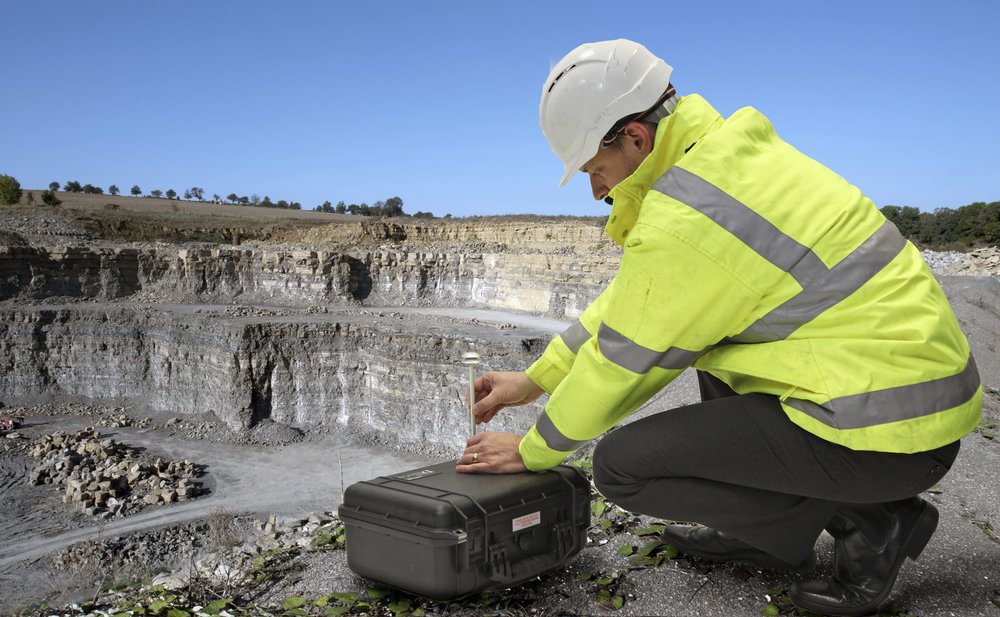Personal Dust Monitoring – Made to Measure
An effective method of protecting workers against harmful exposure to a variety of substances, including silica dust, is through personal air sampling. Personal sampling pumps offer a more enhanced monitoring system with the ability to provide data records all the time. Based on personal air sampling results, employers can further improve management site dust control measures.
It is important that the personal sampling pump is used with the correct cyclone sampling head and filter, which collects the particulate. This is particularly important when monitoring for silica dust. As the filter loads, modern pumps sense the change in pressure and work harder to maintain the flow rate. If personal sampling pumps do not give a constant flow rate, sample accuracy will be limited. Understanding the factors that contribute to effective operation of the sampling pump will allow employers to choose the most efficient device suited to their working environment.
Improvements have been made to different elements of personal sampling pumps over time, including battery technology, back pressure capability, flow control accuracy, and minimized pulsation. These improvements are intended to ensure that measurement of an individual’s exposure to harmful substances is as accurate as possible. New slimmer, more ergonomic designs also make personal pumps less obtrusive to the wearer, allowing the worker to carry on with tasks while being monitored. These new designs, coupled with the latest Bluetooth connectivity to check on the pumps remotely without disturbing the wearer, help to ensure integrity of samples.
Respiratory diseases caused by dust can devastate millions of lives. Personal monitoring is a proficient tool that boosts productivity and motivation while helping employers adhere to safety standards.
Casella's Advanced Dust Detective Enclosure.
The Future for Silica Dust Exposure and Control
Monitoring must continue to evolve in accordance with new legislation and changing production methods. With the introduction of OSHA’s new standard, we can already see that the industry is moving in a positive direction. Employee health must remain a priority and a core component of any workplace health and safety management system.
Educating and training workers and raising awareness about the risks of dust exposure is integral to ensuring that they understand how to prioritize and protect their health. Employers need to keep vigilant, maintain control methods, and limit workers’ exposure to harmful contaminants like silica dust as much as possible.
Justin Stewart is area sales manager for Casella.
Resources
Casella Solutions: “
Catching Dusts: The Risk of Dust in the Workplace
” (2017). Hazards Magazine: “
Silica Part 1: Deadly Silica Standard Is Killing U.K. Workers
” (2014). OSHA: “‘
Crystalline Silica Exposure’ Health Hazard Information for General Industry Employees
” (2002). OSHA Fact Sheet: “
OSHA's Proposed Crystalline Silica Rule: Overview
” (2013). OSHA Fact Sheet: “OSHA’s Respirable Crystalline Silica Standard for Construction” (
PDF
, 2017).OSHA Penalties
(2019).By Justin Stewart
Crystalline silica exposure poses a serious threat to thousands of workers employed in high-risk jobs, including building demolition. Demolition workers may be exposed to a number of different hazards, including noise, vibration, and respirable crystalline silica, or RCS. According to OSHA, more than two million U.S. workers are exposed to RCS in over 600,000 workplaces. Silica is a common mineral found in construction materials such as sand, stone, concrete, brick, and mortar. Workers can be exposed to silica during tasks like abrasive blasting, foundry work, stonecutting, rock drilling, quarry work, and tunneling. The silica dust particles produced during tasks like these are fine enough that they can easily be inhaled and travel deep into workers’ lungs.
Breathing crystalline silica dust can cause silicosis, an incurable and sometimes fatal lung disease. Silica exposure also puts workers at risk of developing lung cancer and other potentially debilitating respiratory diseases such as chronic obstructive pulmonary disease, and kidney disease. By taking simple precautions for dust-producing tasks and by implementing exposure control methods and effective air sampling, employers can limit silica exposures. These are proactive steps to protect the work force and adhere to OSHA’s standard on occupational exposure to respirable crystalline silica in construction.
Setting the Standard for a Safer Workplace
A new crystalline silica standard for construction, 29 CFR 1926.1153, was introduced by OSHA in 2016. It requires employers to limit worker exposures to respirable crystalline silica and to take other steps to protect workers. In accordance with the standard, employers can either use a water delivery or ventilation control to capture or suppress dust, or measure workers’ exposure to silica to independently decide which dust controls would work best to limit exposures in the workplace to the permissible exposure limit. Ultimately, the standard needs to be taken seriously by employers who could otherwise be faced with the consequence of a substantial violation penalty. Silica dust exposure is serious, as is OSHA about cutting down on workplace violations for exposure control negligence. The introduction of this standard also included a new fine schedule, where for the first time in 25 years OSHA increased monetary penalties for violations:
Measuring Exposure to Respirable Silica Dust
Demolition Operations
TOC

SPONSORED BY

memo
and on the agency’s website
. Under OSHA’s new standard, employers are also required to establish and implement a written exposure control plan and designate a competent person to implement the plan. Employers must also restrict practices that expose workers to silica and offer medical exams—including chest X-rays and lung function tests—every three years for workers exposed to silica at or above the PEL for 30 or more days. In addition, records of worker silica exposure and medical exams must be kept, and employers must provide training to educate workers on the health implications of silica exposure, workplace tasks that can expose them to silica, and ways to limit exposure.
OSHA is stressing the increased accountability of employers in the new standard and placing more emphasis on workplaces getting it right when it comes to silica and worker health and well-being.
Silica dust: protect employees from the hazards of demolition.

